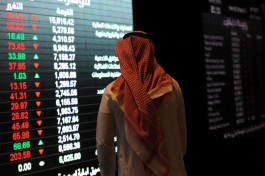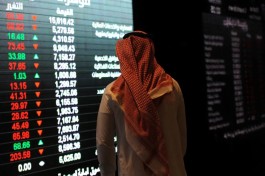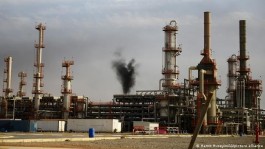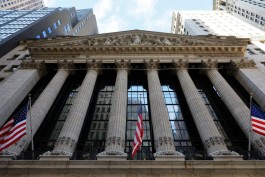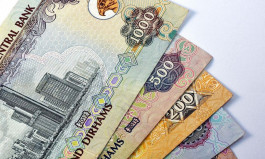The gold market witnessed a series of important global events throughout 2023 that significantly affected its value. The most important of these crises were the banking crisis in the United States and geopolitical tensions.
The Silicon Valley collapse and subsequent bank collapses, part of the largest wave of such events since the 2008 financial crisis, led to a rush toward safe-haven gold.
This led to gold prices rising above $2,000. At the same time, escalating tensions resulting from the conflict between Israel and Hamas have increased the attractiveness of gold.
The dual impact of financial system distress and geopolitical instability has underscored gold's role as a stable investment during turbulent times.
The impact of major global events on gold prices in 2023
The banking crisis, marked by the largest total asset failure in a single year, and the Israeli war on Gaza created an atmosphere of uncertainty and fear, which increased demand for gold. Investors have gravitated towards gold as a protective asset, strengthening its status as a safe haven during periods of economic and geopolitical turmoil. This period of instability led to significant fluctuations in gold prices, highlighting its importance in a diversified investment portfolio.
Global economic forecasts for 2024
Looking forward to 2024, the US economy is expected to continue expanding, supported by strong consumer spending. The Federal Reserve's signals about potential interest rate cuts indicate a shift toward a more flexible monetary policy, amid slowing inflation. This monetary environment is expected to positively impact the gold market, as investors recalibrate their strategies in response to the changing economic landscape.
Potential economic risks and opportunities in 2024
Despite the positive outlook, several risks loom. One of the most important is the adaptation of households and companies to the changing interest rate environment. The rapid rise in the Federal Reserve's base interest rate has led to a tightening of financing conditions, which could dampen economic activity and growth.
In addition, geopolitical risks, including tensions in the Middle East and the economic situation in China, could affect gold market trends. However, the possibility of the Federal Reserve cutting interest rates and expected adjustments in long-term interest rates will particularly impact investor sentiment towards gold.
Analyze how these economic factors affect gold prices
The expected easing of monetary policy by the Federal Reserve may impact gold's attractiveness as an inflation hedge and investment option, especially in a changing monetary landscape.
Summarize the impact of a potential recession on gold prices
Uncertainty and recession as catalysts for gold
In the event of a global recession, gold's historical performance as a safe haven asset typically sees demand increase. Investors often look for effective hedges in their investment portfolios, and gold is often chosen for its stability and potential growth in volatile markets.
The dual role of gold and the impact of recession
Gold's unique position as a consumer commodity and investment asset means that its performance is multi-faceted. In recessionary conditions, economic growth weakens, inflation falls, and interest rate cuts become likely. Historically, these conditions have favored gold, which has shown resilience and positive performance during past recessions.
Geopolitical risks and central bank demand
In the midst of a recession, rising geopolitical risks and important elections in major economies, as well as growing central bank purchases, are providing additional support to gold prices.
Interest rates and economic indicators
Interest rate policies, especially Federal Reserve policies, along with economic indicators such as composite PMIs, manufacturing PMIs, household savings, and unemployment rates, influence the performance of the gold market. In scenarios where persistently high interest rates lead to recession, gold's role as a hedge becomes clearer.
The strategic value of gold in investment portfolios
Despite historical patterns suggesting mixed performance in different economic scenarios, the 2024 context, characterized by geopolitical risks and strong demand from central banks, could make gold more relevant as the overall environment favors it. Gold retains its strategic value in investment portfolios, especially in turbulent economic times, providing stability and diversification.
Monetary policies and interest rates
The diverse monetary policy approaches of the world's major central banks, including the Federal Reserve, the European Central Bank, the Bank of England and the Bank of Japan, present a complex backdrop to the gold market.
The policy decisions of each central bank, which are influenced by its own economic conditions, will significantly impact global financial stability and investor sentiment towards gold. The diverse interest rate paths and monetary policy stances of these central banks will be crucial in shaping gold prices in 2024.
Geopolitical landscape
The geopolitical landscape in 2024 is expected to remain volatile and uncertain. Continuing global conflicts and geopolitical tensions, especially in regions such as the Middle East, will greatly impact the gold market. Wars and crises often push towards safer assets, strengthening gold's position as a safe haven during times of geopolitical turmoil.
Supply and demand analysis
Gold supply and demand dynamics in 2024 are expected to be influenced by stable gold mining production and demand across various sectors, including jewellery, investment, technology and central banks. These factors will be key in determining gold price movements.
Weekly technical analysis of gold
In the weekly spot gold chart, we observe the classic ascending triangle pattern, an indicator often associated with bullish market tendencies in technical analysis.
This pattern is characterized by the presence of a horizontal resistance line and a rising support line. The resistance line is clearly defined at $2,070.63, which represents the upper border of the triangle. Meanwhile, the support line started its upward trajectory from the $1,616.67 level, marking the second important point at $1,810.46.
This formation usually indicates the potential for an upward breakout, indicating a positive shift in the market direction.
In line with the principles governing ascending triangles, the expected target for gold after the breakout is estimated at around $2,524. This target underscores the significant upside potential for gold, highlighting the promising outlook for traders and investors focused on the precious metals market.
However, other factors discussed in this report would support gold’s rise towards new record levels over the next year. As the macroeconomic environment, the geopolitical background, and the policy of reducing interest rates, all support the rise of gold.









